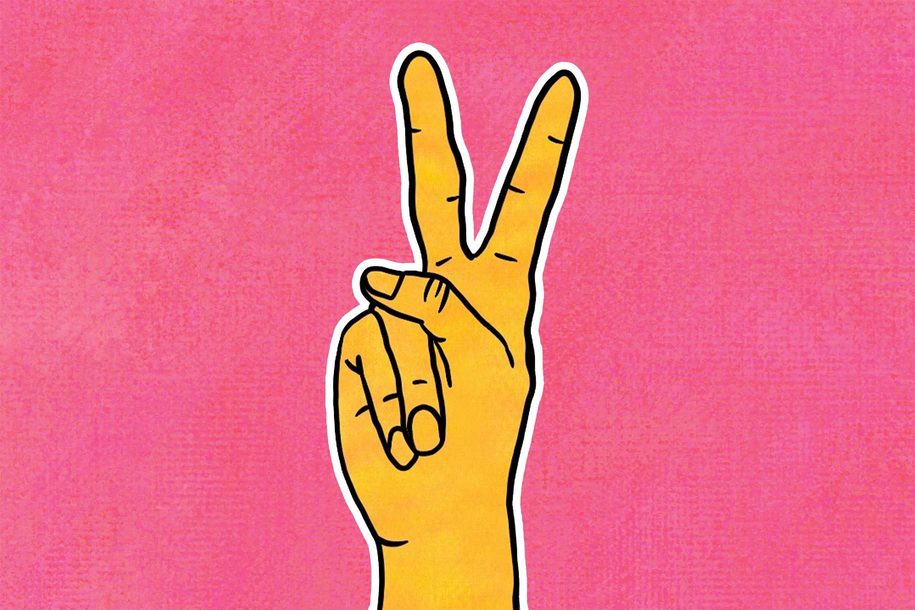
Hand gestures that last longer than spoken languages
Life Desk
Published:20 Aug 2021, 10:00 AM

Hand gestures that last longer than spoken languages
Using hand gestures might feel like an intuitive way to communicate across language barriers, but their meaning can change, and there are few universal signs that everyone agrees on
Our hands are a useful tool for adding meaning to our speech. They might help us to recall words and shape our thoughts – they can even change the sounds our audience hears. Even people who have been blind from birth gesture as they speak, so you might be led to believe that there is something universally understood about the gestures we make – but that is not the case.
The “thumbs up” might be a common way to show your appreciation on social media, but in some parts of Europe and the Middle East the gesture can be offensive. Just because a gesture is common, it is not necessarily universal, warns Lauren Gawne, a linguist at La Trobe University in Australia. And its meaning can change over time. News stories from 2003 reported that US troops travelling through Iraq were greeted by Iraqis with their thumbs up. Were the locals offering their support to the foreign forces or being rude? According to the US Defense Language Institute, a body that provides foreign language training for US forces, Middle Easterners had adopted the Western use of the thumbs up after the first Gulf War as a symbol of their support. Perhaps they weren't being as rude as some thought. More recent diplomatic trips to the Middle East also suggest that the Western use is widespread. But even in the West, a thumbs up does not universally mean the same thing. Scuba divers, for example, use thumbs up to mean “I'm going up to the surface”. The origins of the thumbs up are contentious. Some attribute it to the climax of gladiatorial battles, in which the fate of the losing fighter was decided. Whether a thumbs up or down meant life or death, or whether any thumb at all was a good thing, is disputed. That the gesture of showing someone your thumb has survived longer than the spoken Latin language is mightily impressive, says Gawne. It shows the power of a gesture to cross cultures and time. But, the fact that its origins are mysterious and its use has changed from being an indication of life or death to “everything is OK” or something obscene, demonstrates that hand gestures might not have the same meaning forever.
Like with the Iraqis greeting the Americans, it's possible for a gesture to mean two things at once, or two gestures to mean the same thing. “In parts of the Mediterranean, Turkey, Greece and in southern Italy, you have alternative ways of saying 'no',” says Kensy Cooperrider, a cognitive scientist at the University of Chicago. You could shake your head or you could withdraw your head, pulling it away from the other speaker. “And so you might get both of those gestures in the community at once.” Another example of a meaning that has various gestures is pointing. Nick Enfield, a professor of linguistics anthropology from the University of Sydney, suggests that pointing was a precursor to language itself, essential to early human communication. But pointing is not the same in every culture. In parts of the Americas, Africa, Southeast Asia, Australia and Oceania, pointing with the head, nose or lips is common. Cooperrider suggests that those cultures might value discretion when, for example, hunting. It is important to be able to subtly communicate the direction of a target without raising attention. So, if something as universal as approval, disapproval and pointing can be different across cultures, is there anything that has the same meaning to everyone? And would those gestures stand the test of time?
“People everywhere seem to like to gesture about time, they like to locate tomorrow in one position and yesterday in another position, where exactly they locate them might vary by culture,” says Cooperrider. For English speakers, time moves from left to right and we tend to gesture about things in the future in front of our bodies and things in the past over our shoulders, he says. Both Gawne and Cooperrider say that the “palm-up shrug” appears to be very common, though its origins are not certain. Leonardo da Vinci wrote about and painted the gesture in the 15th Century (three of the attendees in The Last Supper appear to be shrugging). But Cooperrider has also studied modern cultures, from Arabic to Zulu, in which the gesture seems to translate. Gestures that communicate a specific meaning, like “I don't know” or “everything is OK”, are called emblematic gestures. “If you look across cultures, these emblematic gestures are used for interpersonal control,” says Cooperrider. “They're not used to describe objects. You might imagine that people will have a gesture for water, meat, for running and so on. But that's not the case. These gestures are primarily about trying to manipulate the social world, to get people to stop doing what they're doing or to respond to questions.” So, while there might be subtle differences, there are some basic meanings that most cultures seem to communicate with their hands and bodies. Cornelia Müller, a professor of linguistics from European University Viadrina Frankfurt, suggests that the basic building blocks of gesture can be broken down further. She describes four types of hand gestures: ones that mould, draw, act and represent.